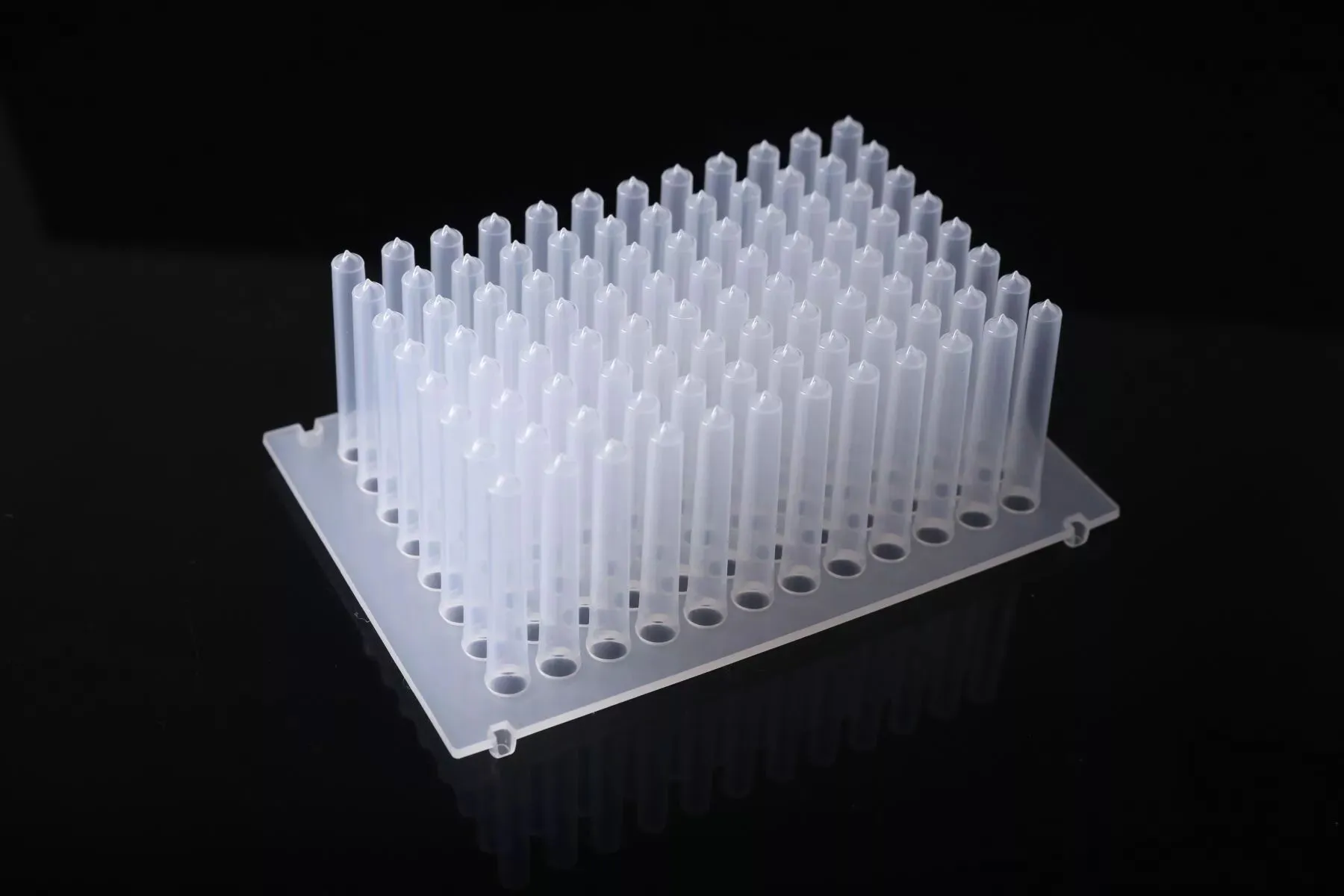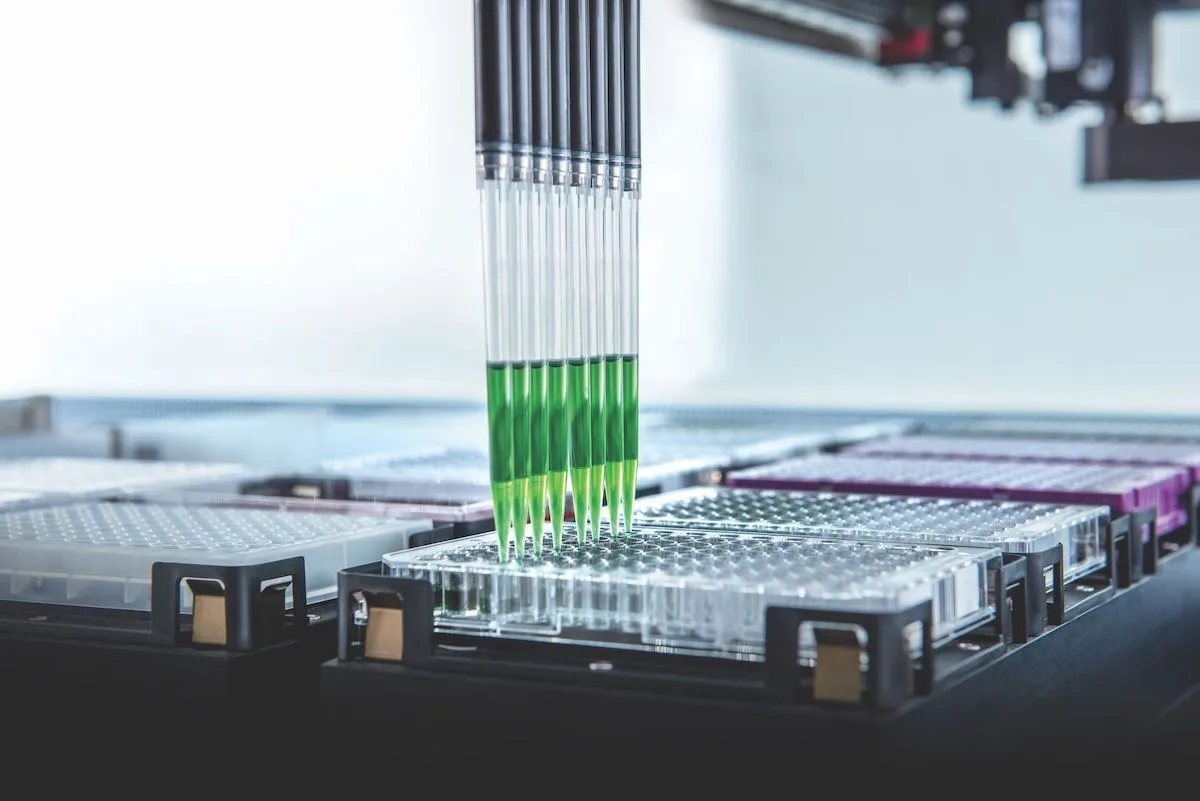The Research Directions of PCR Laboratories
Mar 29, 2024

PCR laboratories, also known as gene amplification laboratories, have seen a significant advancement in DNA quantification technology with the introduction of real-time fluorescence quantitative PCR. This technique, used to amplify specific DNA fragments, serves as a specialized DNA replication process outside living organisms.
Through DNA gene tracking systems, rapid assessment of viral loads within patients' bodies can be achieved with nanometer-level precision. Real-time fluorescence quantitative PCR serves as the carrier for this technology. PCR assays are commonly employed to detect viral infectious diseases such as HIV/AIDS, hepatitis B, and avian influenza. By amplifying genes present within viruses, this method can determine whether individuals with low viral loads harbor specific viruses.
PCR detection methods offer high sensitivity, specificity, rapidity, and minimal sample requirements, making them widely accepted by clinicians. They have been extensively utilized in clinical diagnostics within hospitals and various epidemic prevention and control departments, particularly for avian influenza diagnosis.
Driven by national policies and pandemic developments, hospitals at all levels across regions have begun or are preparing to establish independent, compliant PCR laboratories. The capacity for nucleic acid testing has become a standard requirement for healthcare institutions. However, due to regional variations in the pandemic, some nucleic acid laboratories in long-term low-risk areas, apart from their emergency functions, remain largely inactive. This situation is a primary concern for hospital leadership when establishing laboratories, as substantial investments and efforts are made without generating revenue for the hospital.
Despite their powerful capabilities, PCR laboratories primarily focus on qualitative analysis and quantitative detection. In addition to COVID-19 nucleic acid testing, what else can our versatile PCR laboratories accomplish? The following examples illustrate specific application directions, providing ideas and directions for project development to various levels of medical systems.
Pathogen Determination
PCR technology enables rapid and convenient detection of pathogens. However, accurate template quantification is crucial due to the high false-positive rate of PCR. Fluorescence technology-based PCR can rapidly and accurately yield results. This technology aids in addressing issues related to immunological testing "window periods," determining whether diseases are in a latent or subclinical state, and distinguishing between current and past infections when antibody testing cannot differentiate.
Example: Novel Coronavirus Nucleic Acid Detection.
Methodology: Fluorescence PCR.
Purpose: Used for in vitro qualitative detection of suspected cases of pneumonia caused by the novel coronavirus, suspected clustered cases, and other cases requiring diagnosis or differentiation of novel coronavirus infection.
Target Genes: Novel Coronavirus (2019-nCoV) ORFlab, N gene, E gene.
Sample Types: Upper respiratory tract specimens: throat swabs, nasal swabs; lower respiratory tract specimens: respiratory tract aspirates, bronchoalveolar lavage fluid samples, lung tissue biopsy specimens.
Genetic Disease Testing
Gene mutations and copy number variations are the main genetic bases for the occurrence of genetic diseases and the primary targets of genetic disease testing. The complexity of genetic diseases, characterized by numerous gene mutations and variations, poses technical challenges for clinical testing. Real-time PCR technology, a newly developed next-generation real-time PCR technology that uses fluorescence labeling or melting point analysis, can detect multiple targets within a single reaction tube.
Example: Detection of Microdeletions in the AZF Region of the Human Y Chromosome.
Methodology: Fluorescence PCR.
Purpose: This product is used for qualitative detection of microdeletions in the Y chromosome azoospermia factor (AZF) region in male whole blood samples. The specific deletion sites detected are: AZFa: sY84, sY86; AZFb: sY127, sY134; AZFc: sY254, sY255; AZFd: sY145, sY152.
Clinical research has shown that different degrees of deletion in the Y chromosome AZF region (AZFa, AZFb, AZFc, AZFd) can lead to symptoms such as oligozoospermia, azoospermia, or sperm deformities in males, resulting in male infertility. This kit assists in diagnosing and confirming the etiology of infertility in patients, and the test results are for clinical reference only and cannot be used as the sole basis for diagnosis or exclusion of cases in clinical diagnosis.
Personalized Medication
The development of pharmacology and pharmacogenomics has elucidated the genetic basis of individual differences in drug metabolism and effects. Abnormal drug reactions mainly occur due to variations in drug-metabolizing enzyme genes, resulting in abnormal enzyme activity, which in turn leads to abnormal drug metabolism and elimination, resulting in elevated or reduced drug concentrations in the body. This phenomenon can lead to suboptimal therapeutic effects. These abnormal drug reactions can be addressed by detecting genetic genes related to the drugs taken by patients, adjusting drug doses, or identifying alternative drugs to develop more rational, effective, and economical drug treatment plans.
Example: Cardiovascular Personalized Medication Guidance Testing: CYP2C19 Gene Mutation Detection Kit, CYP2C9 Gene Mutation Detection Kit, ALDH2 Gene Mutation Detection Kit, MTHFR Gene Mutation Detection Kit.
Methodology: Fluorescence PCR.
Purpose: Clopidogrel, warfarin, nitroglycerin, and folic acid are commonly used drugs in cardiovascular clinical practice. Molecular biology testing for cardiovascular medication guidance, with genetic typing, enables clinical pharmacists in the pharmacy department to provide personalized medication recommendations based on test results and considering patient factors, clinical diagnoses, and related information on concomitant medication.
Sample Type: Whole blood (this kit does not require DNA extraction, and PCR can be performed directly by adding samples).
Tumor Research
Tumors pose a significant threat to human health, with malignancy and prognosis primarily determined by the presence of metastasis and pathological staging. With the rapid development of molecular biology, a wealth of research findings in the field of tumor research shows that the occurrence, development, treatment, and prognosis of tumors are related to genes inside tumor cells and tumor-related viruses. Detection of the expression of many oncogenes and tumor suppressor genes can reveal the possibility of carcinogenesis. PCR methodologies can address such issues. Additionally, PCR methods are used for in vitro qualitative detection of septin9 gene methylation in peripheral blood plasma, aiding in the clinical auxiliary diagnosis of various tumors.
Sample Types: Whole blood/tissue.
Previous: Single-Channel Pipettes and Multi-Channel Pipettes
Next: Why Is Vertical Pipetting Required with a Pipette?



